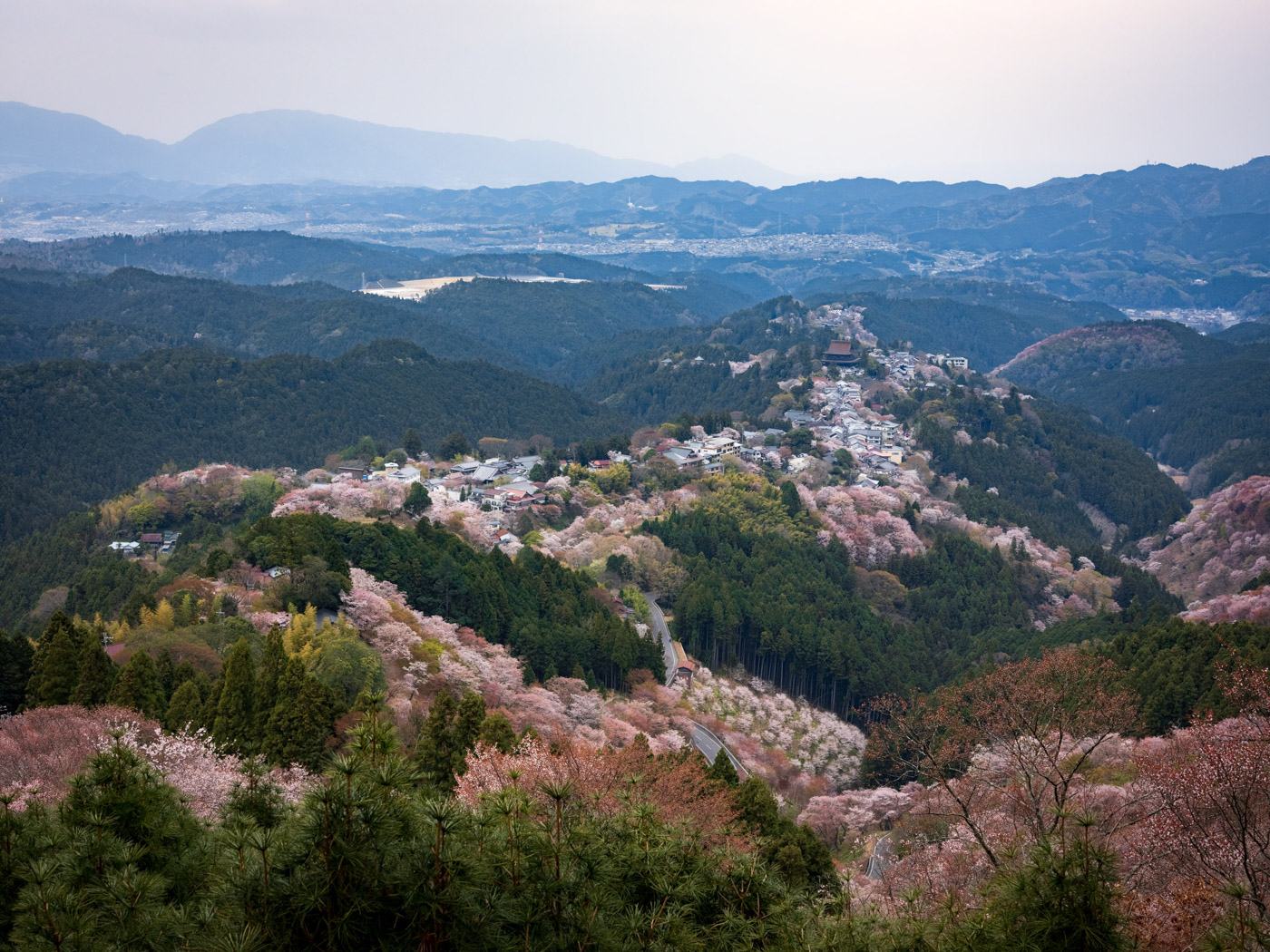
How much do you know about Kansai? Get to know Kansai before you Expo 2025 Osaka, Kansai, Japan! – Nature Edition.
9 Apr 2024
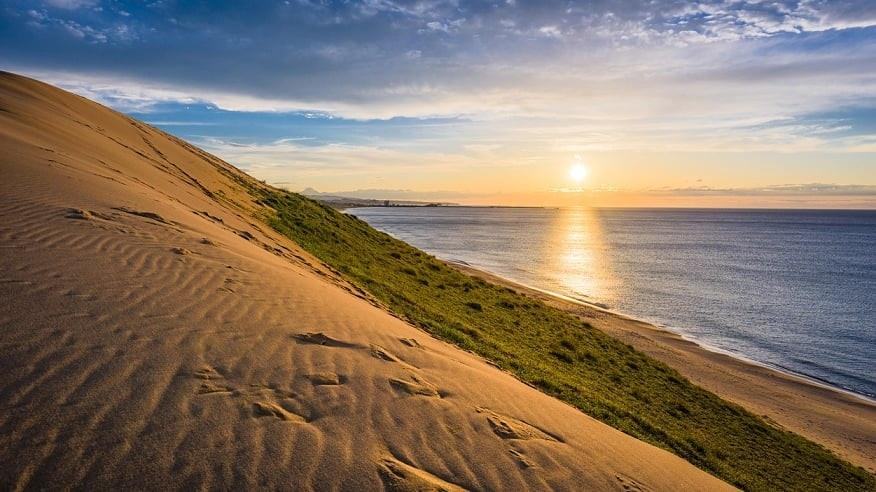
Tottori Sand Dunes
Natural Wonders, Oceans, Mountains, Forests, Rivers and Lakes of Japan’s Kansai Region
Japan is a small island country, but it has a rich variety of natural landscapes that change with the seasons. The Kansai region boasts the largest and best-preserved natural areas in Japan. The sea, mountains, rivers, lakes, waterfalls, and forests are all different from those in other parts of the world, and discovering these differences is a special experience of seeing Japan’s beautiful nature.
In Kansai, you can enjoy the iconic cherry blossoms of spring, lush greenery in the hot summer, and the vivid red, yellow, and orange leaves of autumn, as well as the refreshing white snowscapes of winter. There are also majestic mountains, lush forests, beautiful beaches, wonderful lakes, and sand dunes.
You can encounter these diverse landscapes just two hours away from the major cities of Osaka and Kyoto. Let me introduce some of them.
See The Sea
The extensive Kansai region’s seas include the Sea of Japan to the north, the Pacific Ocean to the south, the Inland Sea of Osaka Bay and the Seto Inland Sea, each one is unique. The simple, sacred beauty of the Mie Prefectural coastline, dotted with tiny islands covered in gnarled pine trees looks like something out of a traditional ink painting. Then there are the Naruto, great whirlpools forming where the powerful rushing tides clash. You can witness this force of nature from the safety and comfort of a tour boat on the Seto Inland Sea. The Sea of Japan provides yet another spectacle, with the relatively calm fishing boat filled waters bordered by exaggeratedly rugged, almost alien coastlines.
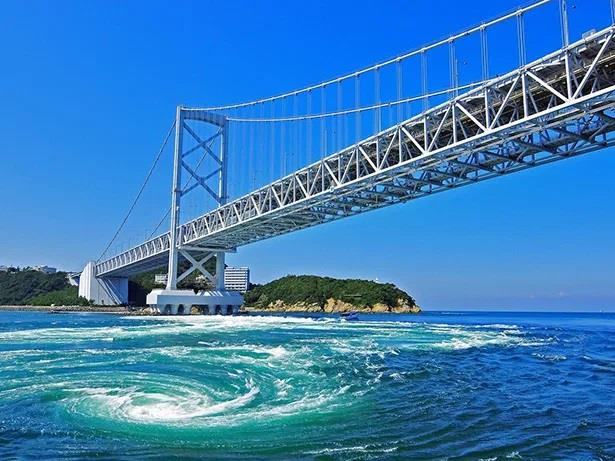
Whirlpools of Naruto(Tokushima)
Kansai’s National Parks
The Kansai region has seven national parks, one UNESCO World Geopark, two Japan Geoparks, and one UNESCO Eco Park, as well as Japan's largest lake and sand dunes. There are whirlpools, waterfalls, and other natural attractions that are representative of Japan or the world. These natural landscapes have their own seasonal attractions. Visitors can enjoy beautiful scenery and enjoy nature by experiencing a wealth of unique activities at various locations.
Yoshino-Kumano National Park
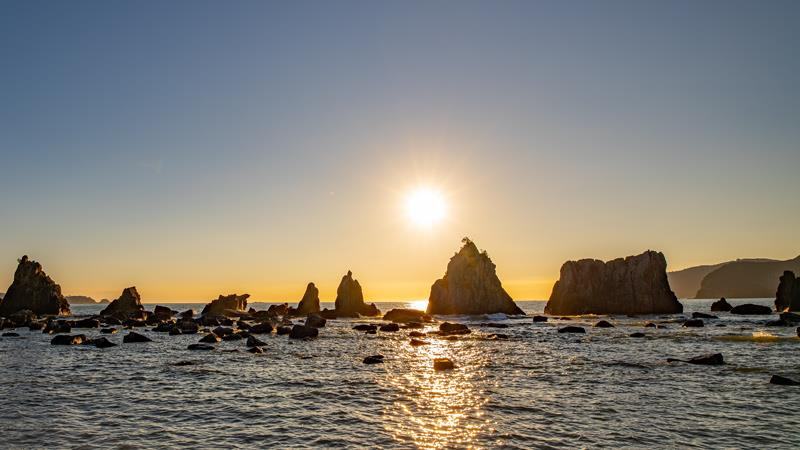
Hashiguiiwa Rocks (Wakayama)
Established in 1936, Yoshino Kumano National Park covers areas of Mie, Nara and Wakayama Prefectures. Mt Yoshino in Nara is particularly famous for its stunning cherry blossom and the UNESCO World Heritage Sacred Sites and Pilgrimage Routes of the Kii Mountain Range. Places of interest include the Dorokyo Gorge, where you can board a hovercraft or pleasure boat to see the erosion formed sheer cliffs topped with thick forests, from the crystal-clear waters below. The Kushimoto Marine Park lies on the southern-most tip of the main island of Honshu and provides yet another change in landscape. The Kuroshio Current flowing around this area brings higher than average temperatures, and the park is noted for its reef-forming coral and tropical marine life. Glass bottomed boats and underwater observation platforms allow visitors to see this remarkable natural phenomena. Nearby Mt.Odaigahara is listed as one of the 100 Landscapes of Japan, and the mystical Yamabushi, mountain ascetic warrior sect training grounds of Mt. Omine on the borders of Mie and Nara are designated a UNESCO Man and Biosphere Reserves.
San’inKaigan National Park
Running continuously along the Sea of Japan coast from Tottori to Kyotango, the Sanin Kaigan National Park is famed for its clear beaches, numerous inlets and fascinating rock formations, strange shaped islands and mysterious caves. Only a little larger than the Tokyo Metropolitan area, it contains various geological features and conditions such as volcanic landforms, rocks and sedimentary layers that show how Japan was connected to the Asian mainland over 25 million years ago.
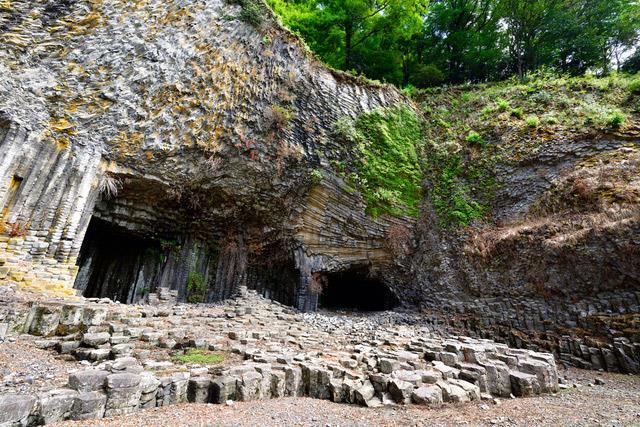
Genbudo Cave(Hyogo)
Running continuously along the Sea of Japan coast from Tottori to Kyotango, the Sanin Kaigan National Park is famed for its clear beaches, numerous inlets and fascinating rock formations, strange shaped islands and mysterious caves. Only a little larger than the Tokyo Metropolitan area, it contains various geological features and conditions such as volcanic landforms, rocks and sedimentary layers that show how Japan was connected to the Asian mainland over 25 million years ago.
Setonaikai, Inland Sea National Park
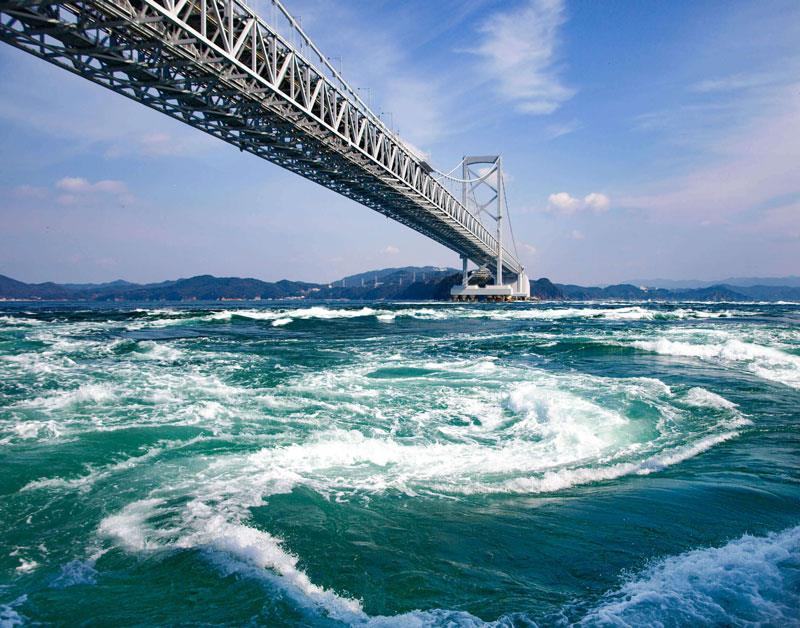
Whirlpools of Naruto(Tokushima)
Japan’s first and largest national park, the Setonaikai, or Inland Sea National Park seascape, borders 10 prefectures and contains over 3,000 islands. Since ancient times the Setonaikai was an important trade and transportation route. The area’s mild climate and calm waters means there are a number of attractive resorts and beaches on offer. Another very popular natural phenomena, giant Naruto whirlpools formed by tidal action can be found in the narrow Naruto Strait between Tokushima and Awaji Islans in Kyogo Prefecture, and viewed from the great bridge, or up close from tourist boats.
Ise-Shima National Park
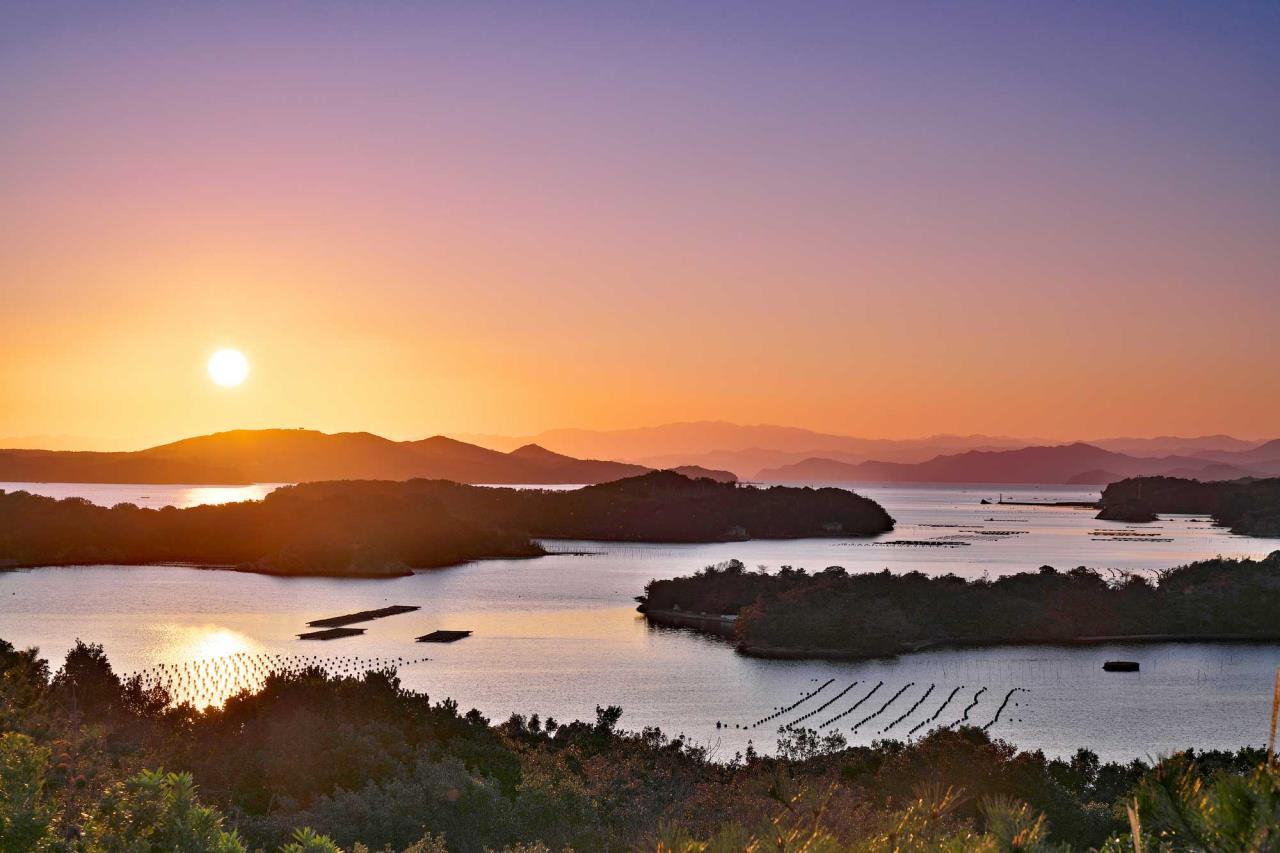
Sunset over Ago Bay(Mie)
The Ise-Shima National Park is known for its intricate, crinkly coastline of coves and bays filled with thousands of picturesque islands dotting the tranquil waters. It’s no wonder the ancient Japanese chose this area for their most sacred of shrines over 2,000 years ago. Besides the must-see Great Shrine of Ise, there is the iconic Meoto Iwa, or the Married Couple Rocks, two holy rocky outcrops linked by a heavy sacred rope just off the coast of Futami in Mie Prefecture.
Daisen-Oki National Park
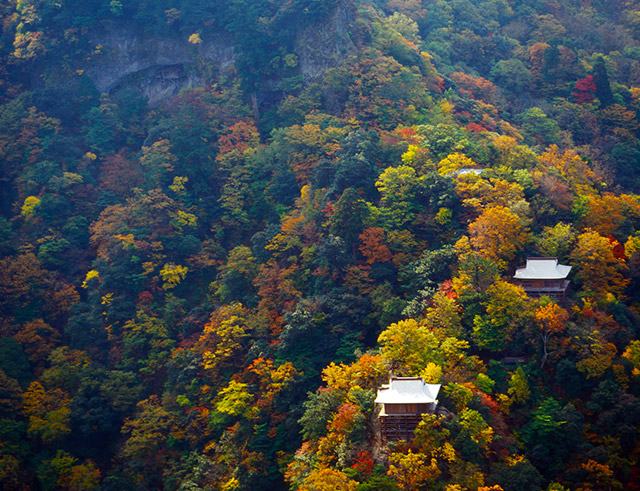
Mitokusan Sanbutsu-ji Temple(Tottori)
The once volcanic Mt. Daisen range, part of the Daisen-Oki National Park, is said to have been the home of the gods. This is an ancient area where nature, history and culture collide with modern outdoor experiences such as hiking, trekking, cycling, cruising, even cultural and traditional experiences.
Meditate on Mt Mitoku, where the National Treasure designated Sanbutsu-ji Temple’s Nagaire-do Hall is precariously supported by wooden pillars built into a grotto high in the rugged cliff face. Visit one of western Japan’s best wild bird habitats and enjoy watching seasonal migratory birds at the Yonago Waterbirds Sanctury. The Daisen Oki National Park is also home to the Oki Islands, featuring over 180 various sized islands some 40 to 80km off the coast. The waves and winds of the Sea of Japan have sculpted these islands into magnificent scenes, and the waters surrounding the islands are among the most pristine. The islands offer a fine range of marine sports and land-based activities making it even more attractive.
Biggest and the Best
Largest Lake
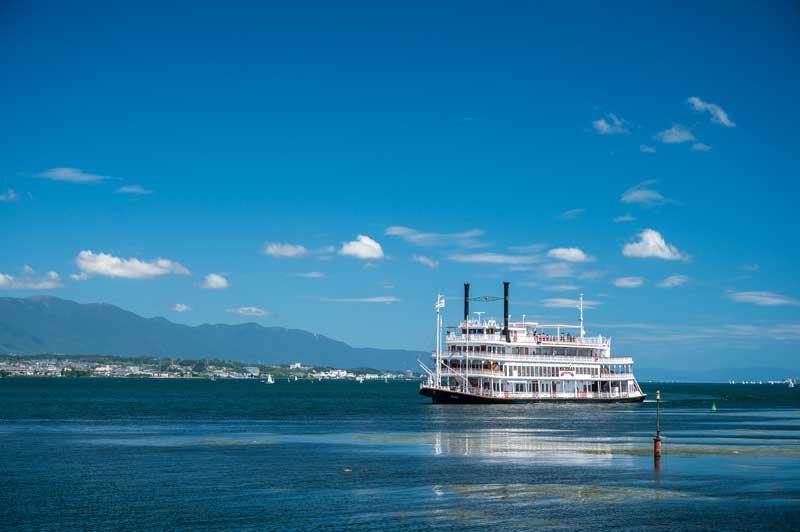
Cruise ship on Lake Biwa(Shiga)
Japan’s largest lake, and having formed around 4 million years ago, one of the world’s oldest freshwater lakes, Lake Biwa boasts a diverse ecosystem featuring over 1,000 species, including 46 native fish species, many endemic to Lake Biwa, molluscs, water birds and more live and breed among the reeds. Designated a UNESCO Ramsar Wetland in 1993, the lake and its surrounds are a relaxing and beautiful lake, fed by 118 small rivers draining from the surrounding mountains. The lake offers a range of year-round activities from cycling its shores to SUP, stand up paddle boarding, kayaking and a host of leisure marine sports.
Oldest Route
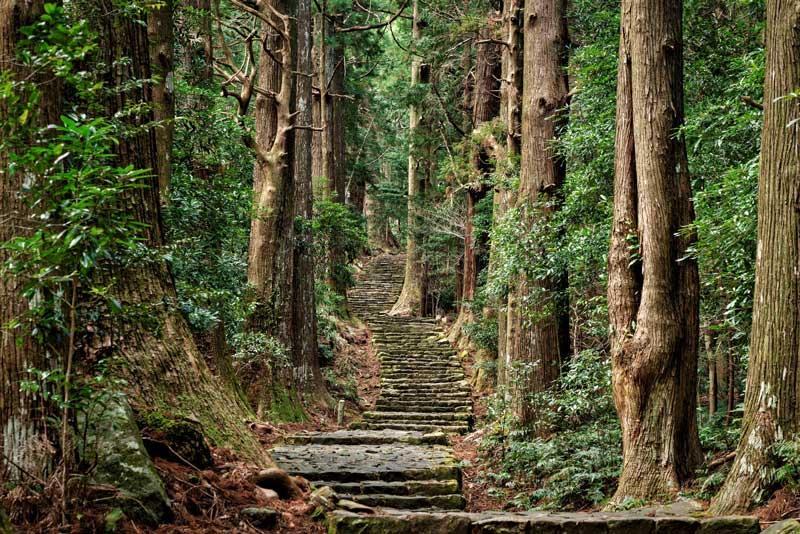
Kumano Kodo(Wakayama)
Some of Japan’s most pristine forests, imposing mountains and rugged yet breathtaking coasts can be found in and around the Kii Peninsula. The east side of the peninsula is Mie Prefecture, while Wakayama Prefecture takes up its western side. Running through the middle is the ancient pilgrimage route, the Kumano Kodo. This route takes you along a path used by the ancient emperors making the pilgrimage between Kyoto and the sacred Ise Shrine. This same route was later used by the samurai, merchants and commoners to visit Ise. Much of the route was painstakingly paved with stone, preventing erosion from the areas’ heavy rainfall, as well as reminding us today, just how important the route was to the people of old Japan.Along the southern end of the Kumano Kodo, near Wakayama Prefecture’s holy Nachi Kumano Taisha Shrine, is Japan’s highest single drop waterfall with a 13m wide, 133m shaft of water cascading over a sheer cliff. The Nachi Falls are surrounded by a broadleaf evergreen primeval forest, part of the ancient shrine’s sanctuary and therefore long protected.
Walk the ancient pilgrimage route the Kumano Kodo to the three main Kumano shrines for a true spiritual experience. Even doing parts of the route, such as the Iseji route, from the sacred Ise Shrine along the rustic stone paved path amongst towering trees and lush ferns will be a life-changing experience, where Japan’s nature, history and culture can be experienced.
Ski
The best ski resort in the Kansai region is located in Shiga Kogen, northwest of Lake Biwa. The resort is spread over a large area and has 51 lifts and gondolas that take you up to an altitude of 1340m to 2307m, where you can enjoy snow activities during the day and night. The season runs from mid-November to late May. It is convenient to access from major cities by train or bus. You can rent all the necessary equipment on site. Accommodation, restaurants, trails, and views are also abundant 1
Outdoor Activities
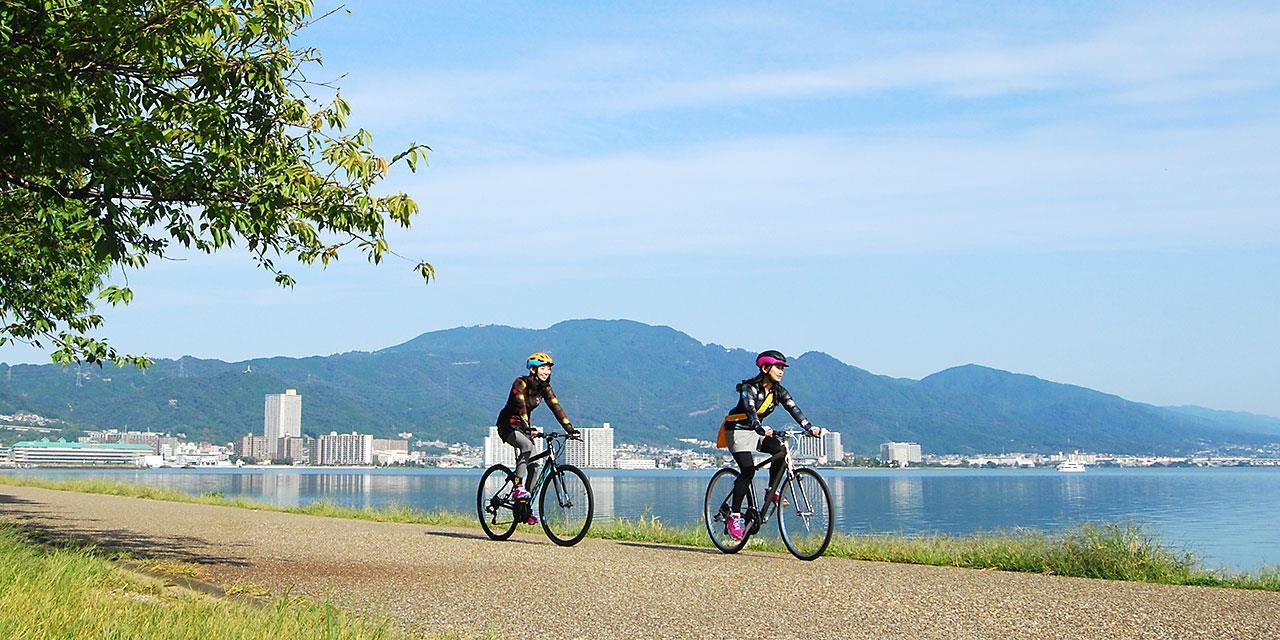
Biwaichi, Japan's No. 1 National Cycle Route around Lake Biwa, approximately 200 km around the lake
The region offers a wealth of active experiences to better enjoy Kansai’s rich nature. Active experiences such as cycling, trekking, stand up paddling, canoeing, even skiing and snorkeling is on offer and actively promoted across the region. Sure, you can do this sort of activity in other countries too, but the difference is in the landscapes and surrounds, also in the way it’s offered, Japanese style! Various outdoor appreciation tours led by informative nature guides will make your visit to Kansai’s dynamic environments all the more enjoyable.
There is something spiritual about the nature of the Kansai region, something that the ancients recognized, and something we of the modern world can feel even today. The range of various activities on offer merely enhances our enjoyment. The fact of just being there, in the nature of a different land, nature long worshipped, is a moving feeling. Likewise, there is something magical about Kansai’s natural wonders, its oceans, mountains, forests, rivers and lakes. It’s something you need to experience for yourself to really, truly understand and appreciate.

